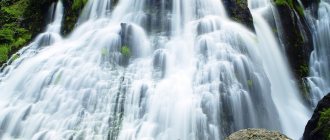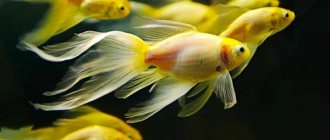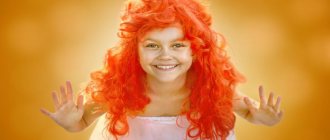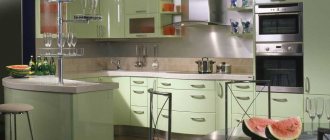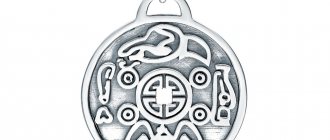Living water flow has always been of great importance in the East: in any picturesque garden or estate there was certainly a stream or fountain.
According to Feng Shui, a waterfall is of great importance in the overall flow of all living energies in a person’s home, because it clearly symbolizes the element of water. It is simply impossible to achieve a harmonious atmosphere in your home or apartment if the balance of all living elements has been disrupted.
What does a waterfall mean according to feng shui?
According to Feng Shui, a waterfall represents a living, rapid flow of the water element. This is an important component of the entire natural balance, one of the fundamental elements of the five elements of all things. It is noteworthy that it is the element of water that is highlighted by eastern practices most of all: it is believed that it is she who personifies the ancestor of all life on earth and is an integral part of the living energy of Qi.
The element of water, placed in residential decoration, can attract harmony, health and peace of mind, even well-being and happiness into the house. A fountain and a waterfall are of great importance according to Feng Shui: it is believed that these two forms of the element of water represent living energy, in constant motion. Living, fast-moving and changing water invariably improves the emotional situation in an apartment or house; a flowing stream can instantly transform the vibrations of invisible energies in a home.
Feng Shui practitioners also claim that even a photograph or drawing of a waterfall carries this powerful charge of living energy. Therefore, you should not be upset if the dimensions of your living space do not allow you to install even a small waterfall in your house. Images of fountains, rushing rivers, waterfalls or streams will come to the rescue.
The main condition is that you should not place pictures with “dead”, stagnant water in your apartment. Lakes or ponds are traditionally avoided when decorating residential furniture in Feng Shui; such paintings should not be placed on the walls of residential premises, because the water depicted on them is stagnant, and therefore does not have any positive energy.
A waterfall is a symbol of perpetual motion, a catalyst for the process of renewal and regeneration, a powerful source of original vital energy and rebirth.
If you want to harmoniously arrange your home and adjust the flow of living vibrations in it, then you should definitely resort to paintings and photographs depicting a waterfall.
What paintings should never be hung in the house?
The ancient Taoist teaching of Feng Shui advises: harmonize your life by harmonizing the surrounding space. Simply put, everything that is in our home should help us live, and not interfere. Of course, this applies to paintings, photographs and any images with which we decorate the walls of our home. Even if you regard Chinese philosophy with some irony, you should not neglect some quite reasonable advice and hinder the movement of life-giving qi energy in your personal universe.
Elena Frolova May 4, 2019
The founders of the teachings of Feng Shui believe that human thoughts are material. If you think about bad things all the time, everything will be bad. And if you cultivate positive thoughts in yourself, then life will improve.
That is why it is not recommended to hang in your home any images that evoke associations with decay, destruction, decay and poverty.
For example:
• Ruins. Even a castle, even a once luxurious one. Ruins are ruins, they are a symbol of death. An excellent example is Vasily Maksimov’s painting “Everything is in the Past.” In the foreground is an old lady who dreams of memories of past luxury, and in the background is a crumbling house with columns and a dried-out garden. Look, breathe, be glad that you still have everything ahead of you, and move on.
• Broken dishes. Are comments needed here at all? Broken cups, vases, plates are the most common symbol of quarrels, squabbles, ruined lives, and mistakes.
• Broken or dried out trees, wilted flowers. If you constantly look at what life has gone from, you will not become an optimist. A constant reminder that everything is perishable makes you depressed.
• Poverty of any kind. Rags, humiliating poses - is this what you dream of? Firs Zhuravlev’s painting “Beggar Children” is a true work of art, but it belongs in a museum.
• Image of standing water. Feng Shui categorically does not accept ponds and swamps. The word “stagnation” has never had a positive connotation. In stagnant waters, the life-giving energy qi does not circulate.
• Images of any defects . All these "absinthe drinkers" usually end up badly. For example, they cut off their ear, paint their self-portrait with a bandaged head... And then their paintings are posthumously sold at auctions for crazy money, and the late author did not have enough to buy bread during his lifetime... In a word, drunkenness, prostitution, drug addiction and other decadence should not flash before through the eyes of a person who strives for purity, physical and moral.
• Incomprehensible signs, writing, meaningless images. Firstly, the inscription may have a bad meaning. Secondly, the constant feeling that you don’t understand something will bring discord into your soul.
• Pictures that you just don't like. The subject of painting can be the work of a famous and recognized artist, it can be beautifully designed, executed with impeccable taste, but at the same time it can tell you absolutely nothing. You are either bored, anxious, or just not at all. This means that this image cannot harmonize your universe and inspire you. Why should you live someone else's life? Let it be a rug with swans on the wall, let it be any kitsch, but only you and your soul sang at the sight of it.
For the benefit of prosperity
The Chinese philosophy of Feng Shui offers a lot of options for images that bring prosperity and development to a person’s life. For example, a plot with a road going into the distance. Or snow-capped mountain peaks illuminated by the sun. According to Feng Shui theory, a mountain is a symbol of constancy and solidity. Or an elephant is a beautiful, strong animal, a symbol of wealth and stability.
The Chinese philosophy of harmonizing the world attaches particular importance to plants, in particular flowers. The feng shui guru's favorite flower is the peony. The words “blooms and smells” literally evoke the appearance and aroma of this plant. Feng Shui theorists advise placing images of peonies anywhere and everywhere, especially in the bedroom: this will inevitably entail the fall of the shackles of celibacy, passionate love, the awakening of sexuality in experienced spouses and, in general, a continuous fireworks display of feelings.
Now let's go through the rooms.
What paintings to hang in the living room
In this room you welcome guests, think, communicate with family members. The living room is begged for images symbolizing movement: dancing people, running horses, flying birds, ships sailing on the sea, and so on. This will refresh your life and attract an influx of new energy.
If you have a common goal, a dream, hang a picture in your living room that will encourage you to strive for your goal. Thoughts are material, remember?
Are you planning to build a country house - choose an image of your dream mansion and place it in the most visible place
An image of a home where you just want to warm up would also be suitable. Reproductions depicting fluttering butterflies promise profit - the fluttering of butterfly wings has a good effect on the movement of qi energy.
Forest landscapes (without lead clouds and broken trees) are also an option for the living room. Your favorite paintings should be hung in well-lit areas.
If the family is religious, spiritual themes would be appropriate in the living room.
How to decorate a bedroom
Relaxation is what a painting in the bedroom should bring you. No aggressive, battle scenes. And no volcanoes or waterfalls in frames. The waterfall does not lull you to sleep; it is a warlike state of water. Ponds and swamps kill sexual energy; we don’t need stagnant water here.
If you have already decorated the wall in the bedroom with loving peonies, you can add to them some romantic motifs on the canvases: couples in love, cooing lovebirds, a sultry beach with two walking figures.
What images to place in the kitchen
Juicy fruits and berries, all kinds of still lifes that whet the appetite, beautiful landscapes, the structure of wood in painting motifs - this is what will attract well-being to places where food is prepared and eaten. Particular attention should be paid to green and other “vegetal” shades. Red is also used in kitchen illustrations - it symbolizes the color of fire.
Delicate shades, flowering plants, cute playing animals - let all this reign on the walls in the child’s room. The Chinese advise decorating the nursery with images of a sunflower, a sunny flower symbolizing health and upward striving. It will also motivate teenagers to develop. They also say that sunflowers drive away evil spirits.
See also: Painting waterfalls in oil
What to hang in the hallway
This room is the first to receive hosts and guests, so images are needed here that regulate the “good” energy flow and nullify the “bad” energy flow.
Landscapes will be good in the hallway, but they depict nature and the city not at sunset. Beautiful, non-aggressive animals (preferably in pairs), playing children - that’s what you need. A waterfall is suitable for the influx of monetary energy, but with an average force of falling water.
Feng Shui paintings with water
The Feng Shui waterfall (pictures are presented in the article) is, as mentioned above, a source of vitality and constant changes for the better. If you notice that there is stagnation in your life, things stubbornly do not move forward, and you yourself seem to be endlessly marking time in one place, then the element of water will help you give a tangible impetus.
Place a painting or photograph of a waterfall in your home, and you will be surprised to find that positive changes will not be long in coming. In particular, Feng Shui advises those people who live in densely populated cities, remote from wildlife, to resort to this trick. And for residents of apartments in high-rise buildings, this technique will regularly relieve the stress that accumulates during the day and eliminate the feeling of immobility of life and stagnation (this is very important in apartment buildings, where the flow of Qi energy is initially disrupted).
In addition, water is also a symbol of abundance, wealth and good luck. It attracts material well-being, a favorable outcome of any financial transactions, prosperity and luxury into the home. A picture of a waterfall has no less power than a real decorative waterfall if it is placed in the right place, from the point of view of Feng Shui philosophy.
How to activate the effect of the water amulet?
- To achieve the greatest effect, the source should be made of glass or natural stone. If you have chosen a decorative ceramic fountain, then place an even number of stones around it, this will bring the Qi energy into action.
- Decorate a fountain or waterfall with multi-colored stones, quartz or crystals - this will enhance the positive effect of the amulet.
- Renew the water regularly, keep the area around the water amulet clean.
- Remember the main sign - water should be in constant motion.
- Complete the composition with a figurine of a three-legged toad, or “populate” your waterfall with fish (not live ones, of course) - these are also symbols of wealth and prosperity. You can place a pot of Crassula - a money tree - next to it.
- Do not place a waterfall in the kitchen or bedroom; it would not be appropriate in a child’s room, but in the dining room, living room or hallway, this is the place for it.
- Also, you should not place a fountain or an aquarium under the stairs - it will “wash out” the foundation of your house, having a destructive effect on your family.
After reading this article, you may be eager to arrange a waterfall or install a small decorative fountain in your house (apartment). In this case, it is worth considering a few more important nuances:
- when installing a source of Qi energy, take into account the size of the room and the home as a whole, because bigger does not mean better,
- the fountain you install must match the style in which your home is decorated, so as not to disturb the harmony of the entire space,
- the fountain device should be simple and easy to maintain, not noisy, so that the sound of the operating mechanism does not cause discomfort.
If there is nowhere or is not possible to place a fountain or waterfall in the house, then you can arrange it near the house, on the plot. In this case, the Qi source must be positioned so that it is clearly visible from the entrance.
In addition, in an outdoor waterfall it is very important which direction the water flows, and it should flow towards the house.
In any case, wherever you install a source of moving water, such a powerful energy generator will contribute not only to your calm, peace and health, but also to your family members. Source: fehnshuj.ru
Waterfall painting: where to hang according to Feng Shui
Before you go to choose a suitable painting or photo, it will not hurt to know some of the features. Thus, the ideal pictures of waterfalls are those where the water is depicted as naturally as possible, where living and pristine nature reigns.
A good solution would be those paintings that also depict trees, sky, birds and animals. It is better that no traces of a person are displayed on them. Household objects, buildings, people or vehicles (for example, a boat at a waterfall) - all these nuances can damage the original flow of Qi energy. In a correct picture of a waterfall, nothing from the human world should be visible.
Pay attention to the paints, shades of gouache or watercolor with which the landscape is drawn. It’s good if they have natural shades, and the picture is rendered in the most natural tones. In other words, the grass should be green, the sky should be blue, and the clouds should be white. No innovative ideas or special vision of the artist are welcome here and will even be completely inappropriate. Ideally, a picture of a waterfall should highlight a picturesque natural area with flowering vegetation and a clear sky. It’s good if this picture depicts daylight hours.
And a little more about the water itself: make sure that the flow in the drawing or photograph does not have any obstacles. The waterfall should be solid and smooth, continuously falling down. It’s bad if in some places the water sheet is interrupted, if stones or ledges are visible from under it. The surface of the water should be smooth, as if silky.
